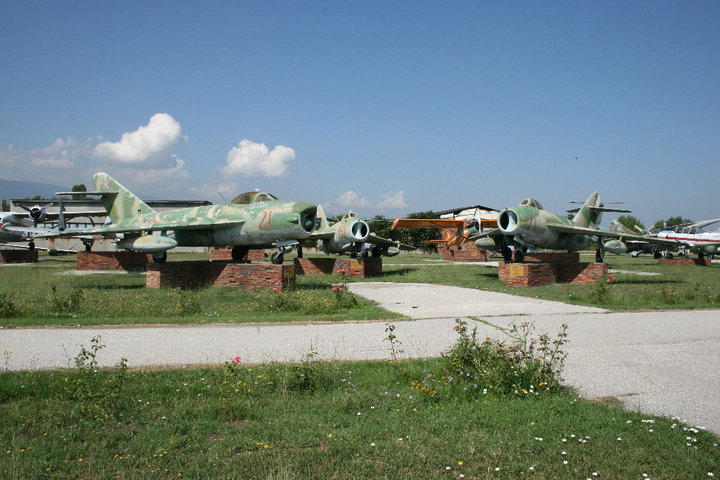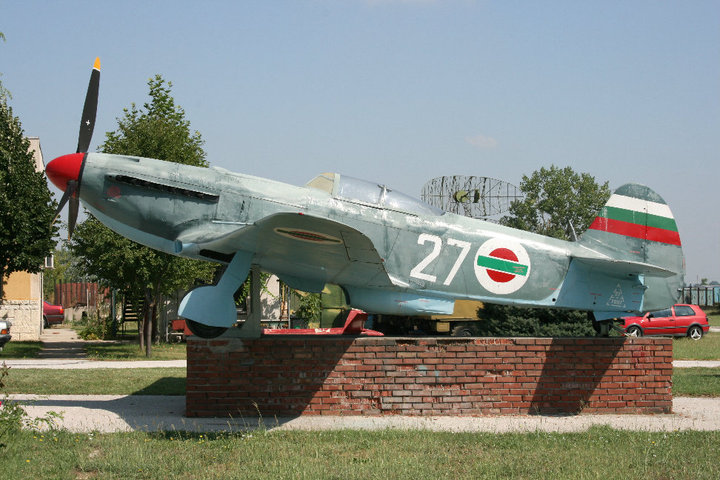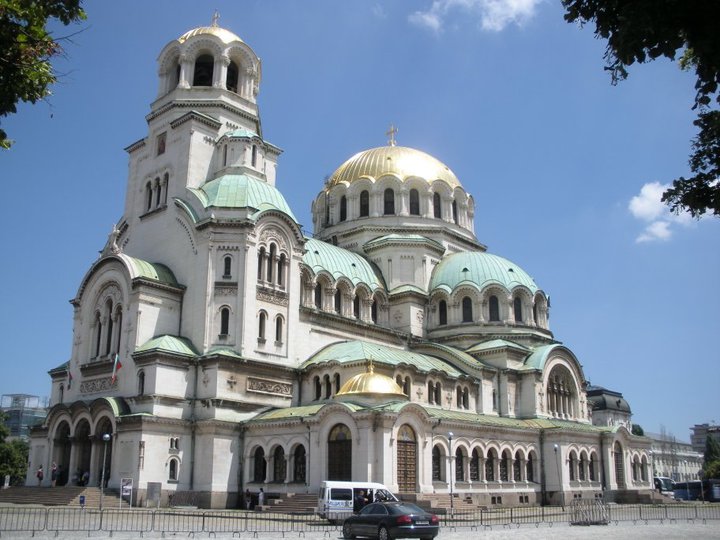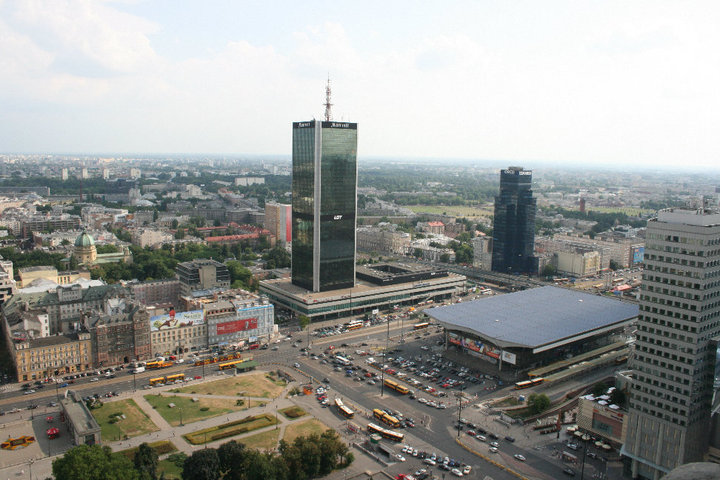In May 2010 I decided to leave my job in Australia and travel around the world before moving to the USA. This journey ended up involving travelling in 18 countries on 4 continents (North America, Europe, Asia and Australia) and taking me around the world 1.5 times over a 12 month period! I wrote a number of travel emails from that trip and I thought it would be fun to revisit them with some additional info and photos. The following blog is Part 15 of that journey (Bulgaria and Poland).
July 21st, 2011
Hi All,
Well I made it out to the Bulgarian Air Force Museum – about 15km south of Plovdiv near a military base. I arranged a deal with a taxi driver who happened to be a retired Bulgarian Air Force mechanic who could speak some English, so he knew exactly where I wanted to go.
Its funny, but all I hear is stories of being ripped off by taxi drivers in Romania and Bulgaria…its pretty simple – a) check the rates are on the door, b) check the meter is working, c) negotiate a price first if you are going a longer distance or d) don’t get into the cab! That’s how you avoid it!
When I arrived at the Air Force museum the only other person I could see was a guy mowing the lawns. I wasn’t too sure where to go to pay my entry, then the guy mowing the lawns wandered over, said hello and also took my admission fee (a couple of dollars) and I was free to explore the museum!
The museum was an interesting place but it was very hot wandering about as nearly everything was displayed outside and the current temperature is about 36c/96F. Some of the aircraft were beautifully restored, others in a sorry state, but overall a very unique museum – especially because they have grouped together different variants of the same types of Soviet built Mikoyan Gurevich (MiG) fighter aircraft they have operated i.e. the MiG-17 “Fresco”, MiG-19 “Farmer” and MiG-21 “Fishbed” (I have never seen this before).



The majority of aircraft on display represent the Communist era of Bulgaria and as such are of Soviet Russia origin. These ranged from WW2, including the legendary Ilyushin IL-2 Sturmovik the best ground attack aircraft of that war to cold war era aircraft, including jets, trainers, transports and helicopters.





There are also aircraft on display that are very rare such as the German built WW2 era Arado Ar-196 float plane (possibly only 3 airframes left in the world from over 500 originally built) and the ungainly looking Yakovlev Yak-23 “Flora” jet fighter that was operated in the early 1950’s. You could also walk up to and under any aircraft on display – no barriers!


In the museum building they had a Russian Soyuz rocket capsule that launched the first Bulgarian Cosmonaut. I also stuck my nose in an off-limits area where they had a lot of really old aircraft hidden away in a dark locked hanger – wish I could have gotten in there! Way out the back were the wrecks of various aircraft and helicopters.
The next day I made my way by bus to Sofia the capital of Bulgaria. Most travellers had previously told me this was a run down city as bad as Bucharest in Romania (although I didn’t mind my stay there either). It is far from that though and seems like a nice place – albeit there is not much to see here. I went the giant St. Alexander Nevsky Cathedral (built between 1882 and 1912) it has massive gold domes and amazing artwork inside.


I also did some negotiation in a nearby market for some old military badges from the 1930’s and was happy with the outcome! The hostel I was meant to stay in had overbooked, so they arranged for me to stay nearby in Hostel Sofia – the first hostel in Sofia after communist times. It is an old apartment converted into a hostel (as many are in East Europe) – this was a clean and quirky place, run by a middle-aged Bulgarian couple. The next day I went to Hostel Mostel – nice place, but busier and lacked that same character – should have stayed in the other. The main reason I didn’t, was that I wanted to do a tour organised by Hostel Mostel to the Rila Monastery, a UNESCO World Heritage Site (founded in the 10th century, it was destroyed by fire at the beginning of the 19th century and rebuilt 1834-1862), which is 2 hours south of Sofia in the Rila Mountains – it is the main tourist destination in Bulgaria.
6 of us headed off on in a car and a taxi for the journey to tour Rila – quite a strange convoy in a way, setting off on the cobble stoned streets of Sofia with 2 French, 1 Japanese, 1 Spanish, 1 French Canadian and me the Aussie – driving through fields, then winding our way up into the mountains. The monastery was an impressive site – the main church behind high walls – it is very ornate, surrounded by mountain peaks and forest. First though we did a quick hike up to a cave where a monk lived for 7 years…some sort of religious experience. Going into the cave we climbed out a small hole to the top – quite a squeeze! I noticed a Nun in full carb climb up through that tiny tunnel too….quite amusing! Then back to the monastery.

The monastery church had amazing paintings of religious icons and of fire and brimstone inside and outside – angels fighting against demons, demons doing beastly things to human souls…the usual stuff! Inside the outer walls of the place are the residences of the monks – 3 stories high. Quite an impressive place and well worth the trip.




Poland
Now I am in Warsaw, Poland (took a 2 hour flight – much better than any extremely long train option through 3 other countries). Warsaw is an upcoming place, now very modern with a long and destructive history, the city was virtually rebuilt since WW2 due to the damage done to it. As a result it doesn’t really feel like you are in Eastern Europe (apart from the Old Town). It is just like any other Central European city – lots of foreigners here – havent heard so many Aussie accents in over a month!

There is not much to remind of Warsaw’s communist past other than the towering Palace of Culture and Science (a gift from the Soviets) – completed in 1955 it is the cities most visible landmark (42 floors). It was probably meant more as a symbol of Soviet might as the overlords, but it is impressive and is similar to the Stalin Towers (7 sisters) I saw in Moscow in 2007. I bet the poles hated it at the time (some probably still do).

My first port of call in Warsaw was to get some Pierogi’s (polish dumplings) – found a restaurant with very attractive waitresses in traditional dress (imagine a folk culture version of Hooters in the USA!)…ah life is tough! Oh the Pierogi’s were good too!

I spent the next day exploring the Old Town of Warsaw including the royal palace, churches, homes and monuments including the famous Mermaid. This area was completely rebuilt from the rubble of WW2, quite amazing really. I also wandered down to the famous Vistula River, but I didn’t exactly hit the most picturesque part – so nothing great to write about there!


The rest of the day was spent visiting memorial sites within the Warsaw Ghetto where the Germans isolated the Jews behind walls and where the Warsaw Uprising occurred culminating into a major battle in 1944. The uprising was inspired by the appearance of Soviet troops across the Vistula River, but the Soviets failed to intervene. The uprising involved savage street fighting, which the German ultimately won and resulted in the area being raised to the ground and the death of 166,000 people.




My last full day in Warsaw was excellent. I went to the Polish Army Museum which had great outdoor displays of immaculately restored aircraft, helicopters, tanks and weaponry from the Soviet era (WW2 to Cold War).




The real highlight of the Polish Army Museum was inside the museum where they had displays of the armour of Polish Knights, impressively displayed all grouped together. My favourite was the armour of the 16th century Winged Hussars with leopard fur and wings with real eagle feathers, it looked amazing and was designed to terrify the enemy! I was impressed more than terrified!



Then onto the Warsaw Rising Museum, a relatively new place and very well put together – covering all aspects of the uprising from the Polish, German and Russian side. Covered the horrors, the heroics, the weaponry, the human side of the conflict in 1943-44 – basically everything. Great and informative museum of a terrible time in history!
I finished the day of with the views from the 30th floor of the Palace of Culture and Science. Tomorrow I head for Gdansk on the Baltic Sea, the home of the union movement in the 1980s which commenced the downfall of Communism across Europe – led by Lech Wałesa. Who later won a Nobel Peace Prize and became President of Poland. From there it will be onto country areas – Mansurian Lakes, the “Wolfs Lair” (Hitlers bunker 1941-1944) and then the Bialoweza National Park on the Belarus border. The last true primeval forest in Europe and home to many animals including European Bison and Lynx cats.

Oh to go to Poland especially Warsaw where I can hit that restaurant and have those cute Polish bimbos feed me Pierogis ,kielbasa and beer!